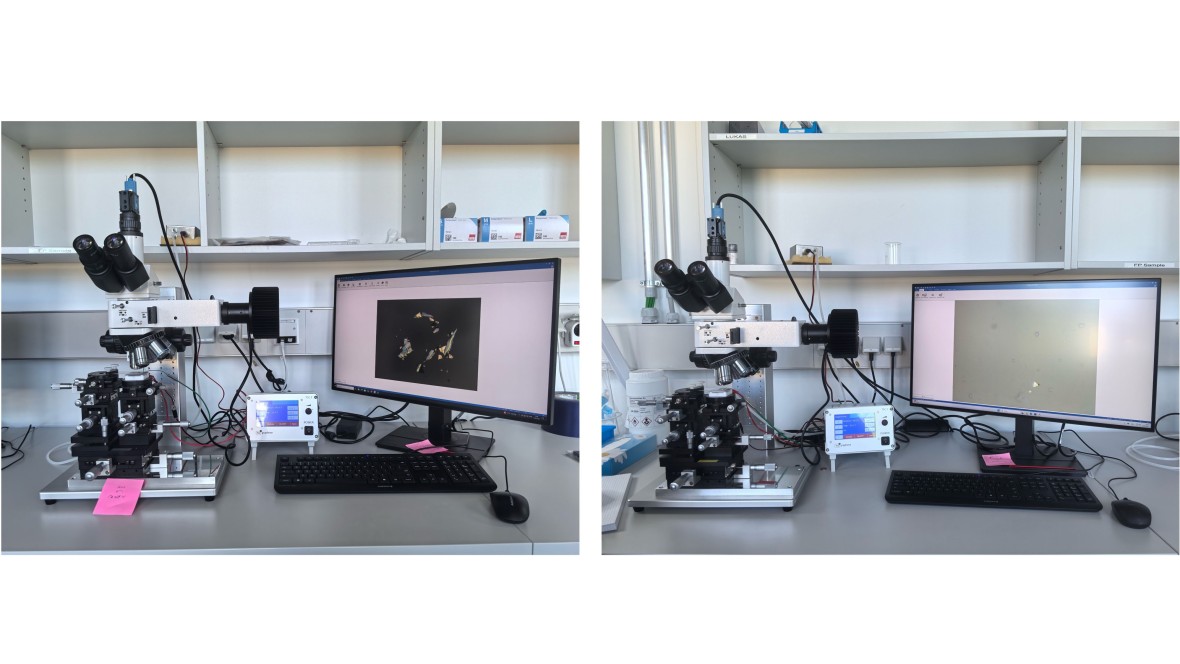Lab impressions
-
![]()
Optical microscopes for sample fabrication (HQ Graphene) -
![Dry (left) and vacuum (right) desiccators. Photographer: D. Markina]() Picture: D. Markina
Picture: D. MarkinaDry (left) and vaccum (right) desiccator -
![]()
Plasma Etcher (Diener electronic) -
![]()
Hotplate RSM-14HP (Phoenix Instrument) -
![]()
Optical images for different layered materials
- Go to picture 1
- Go to picture 2
- Go to picture 3
- Go to picture 4
- Go to picture 5
Obtained monolayers can then be transferred to any substrate, encapsulated, or created heterostructures using a transfer system. We work with a manual transfer system (HQ graphene) and a camera with imaging software to control the fabrication process. To store obtained samples, we use dry or vacuum desiccators preventing samples from degradation. To improve adhesion and remove surface residues, the substrate is cleaned using oxygen plasma treatment (Diener electronic).
Related publications:
“Colloquium: Excitons in atomically thin transition metal dichalcogenides” G Wang, A Chernikov, M. M. Glazov, T. F. Heinz, X. Marie, T. Amand, B. Urbaszek,
Reviews of Modern Physics, 90, 021001(2018)
“Excitonic Linewidth Approaching the Homogeneous Limit in MoS2-Based van der Waals Heterostructures”, F. Cadiz, E. Courtade, C. Robert, G. Wang, Y. Shen, H. Cai, T. Taniguchi, K. Watanabe, H. Carrere, D. Lagarde, M. Manca, T. Amand, P. Renucci, S. Tongay, X. Marie, and B. Urbaszek, Phys. Rev. X 7, 021026 (2017)








